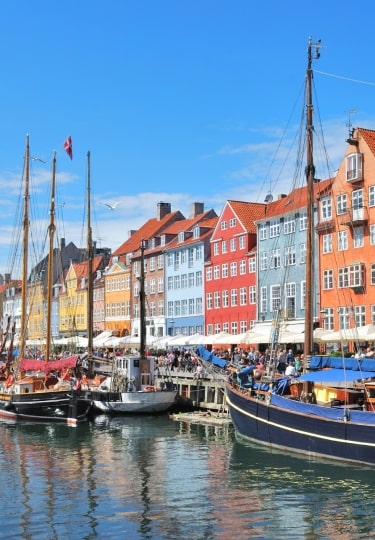Ask a local what Denmark is known for and they’re likely to point to the country’s world-renowned fine dining scene, picturesque seascapes, and warm-hearted people. With a population of 5.8 million, this Nordic nation is small, yet rich in culture, history, and natural splendor.
Above all, this is a place with charm to spare, where the winters are supremely cozy and the summers raucously joyful.
The list of what Denmark is famous for ranges from impeccable modernist design to baroque palaces, a popular, long-reigning royal family to an equally popular quasi-anarchist Copenhagen community, and so much more. Above all, this small nation is proud of its welcoming spirit, which makes it a joy to visit.
Here are just a few of the things to keep an eye out for on your visit to Denmark.
Smørrebrød
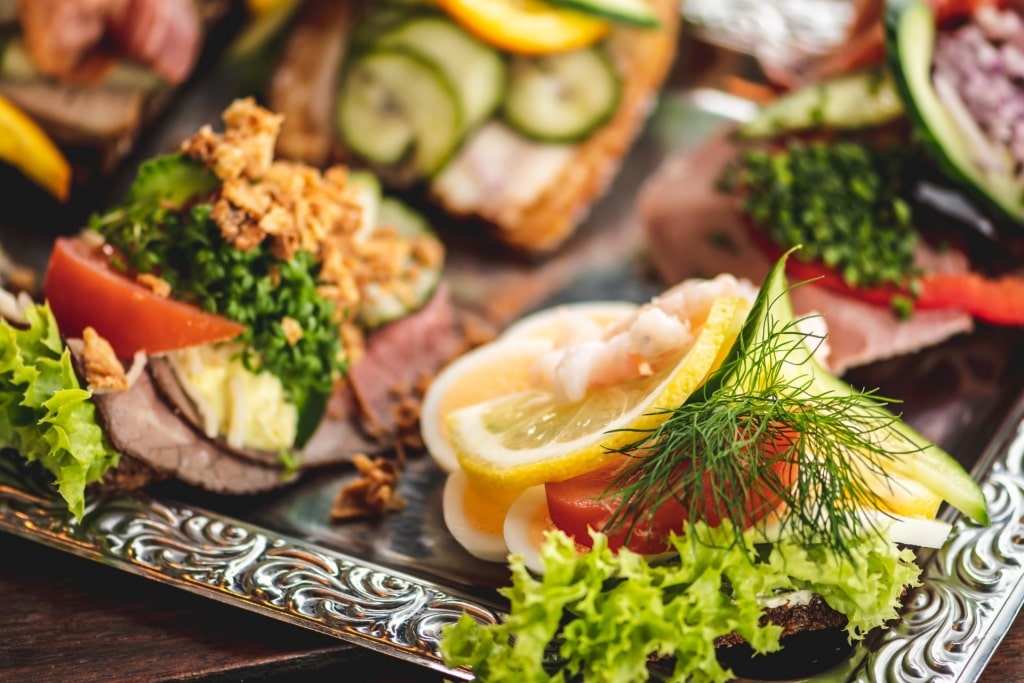
Smørrebrød
No visit to Denmark would be complete without taking time for a traditional lunch of smørrebrød, the country’s ubiquitous open-faced sandwiches. In essence, a smørrebrød is a blank canvas, albeit with a few rules.
The bread of choice is typically a slim rectangle of dark, dense Danish rye known as rugbrød. A slick of salted, high-fat butter, mayonnaise, or even duck or goose fat adds richness and keeps the toppings from making the bread base soggy.
After that, the toppings can vary from incredibly humble to Michelin-worthy. At their simplest, smørrebrød are often topped with hard-boiled eggs, pickled herring, smoked salmon, ham, or cheese, perhaps with some pickled onions or dill for garnish.
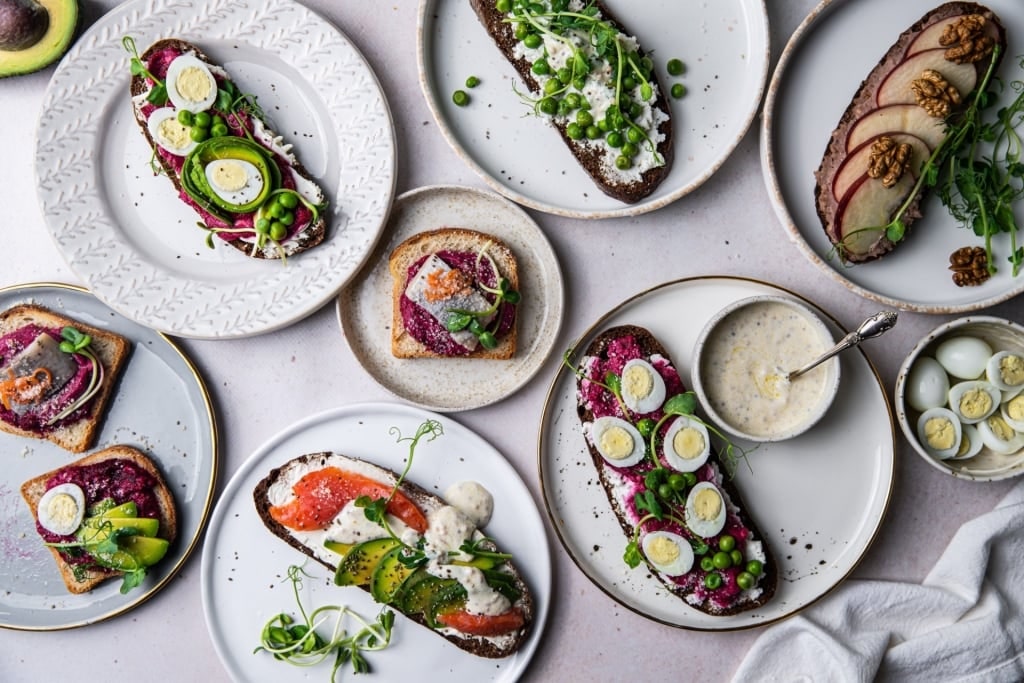
Smørrebrød
At fine dining restaurants, the sky’s the limit, with premium cuts of raw, smoked, and pickled fish, plus caviar, all considered fair game. Above all, smørrebrød is a popular European dish meant to be eaten with your eyes. Even simple toppings are meticulously sliced and presented.
Smørrebrød can be found in practically every Danish food hall, as well as quite a few cafés and bakeries. For a truly superlative experience, however, pay a visit to Restaurant Schønnemann, a Copenhagen institution since 1877 that bakes its own rye bread and cures its own herring. It’s the perfect place for a sophisticated, leisurely lunch accompanied by Danish schnapps.
Read: The Ultimate Copenhagen Food Guide
The Little Mermaid
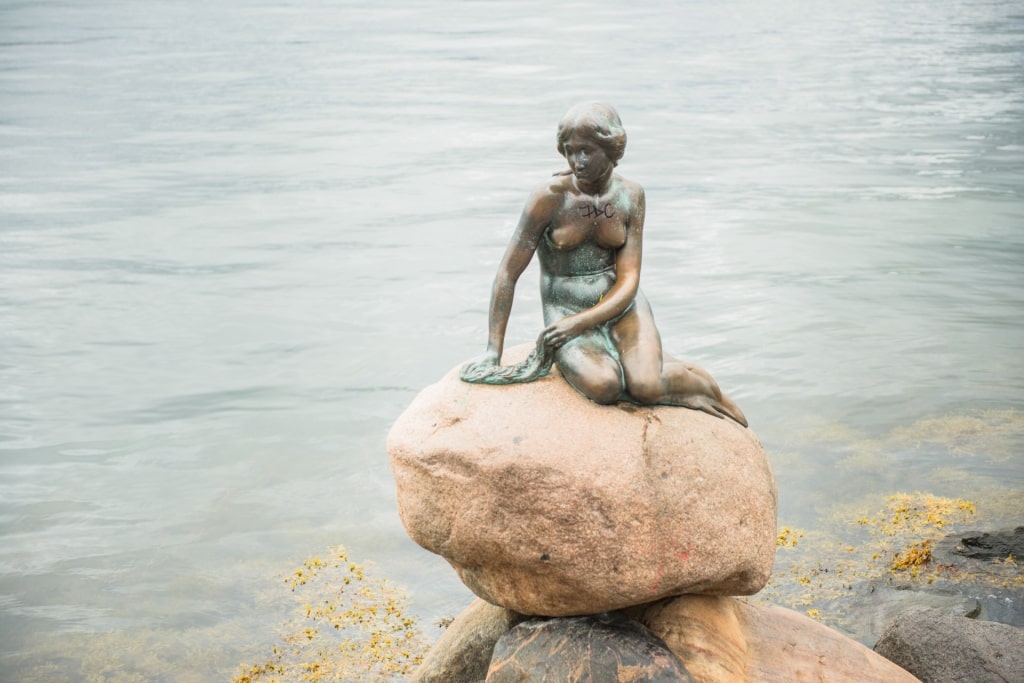
The Little Mermaid, Copenhagen
What is Denmark known for? Ask any visitor and they’ll probably reply “The Little Mermaid”. Danish author Hans Christian Andersen penned an impressive number of novels, plays, and other works in his lifetime, but his legacy will always be synonymous with one in particular.
Since its publication in 1837, “The Little Mermaid,” part of his short-story collection entitled Fairy Tales Told for Children, has become a beloved classic. The simple, allegorical tale of a young mermaid princess who longs to become human resonated with audiences of all ages, leading to multiple film and stage adaptations.
While the mermaid named Ariel has fans all over the world, the Danes are particularly proud of their literary heroine.
In 1909, Carl Jacobsen, a local philanthropist and heir to the Carlsberg brewing fortune, commissioned a statue of the siren for the Copenhagen harbor. Her wistful face was sculpted in the likeness of a prima ballerina for the Royal Danish Ballet who danced the part on stage.
New Nordic Dining
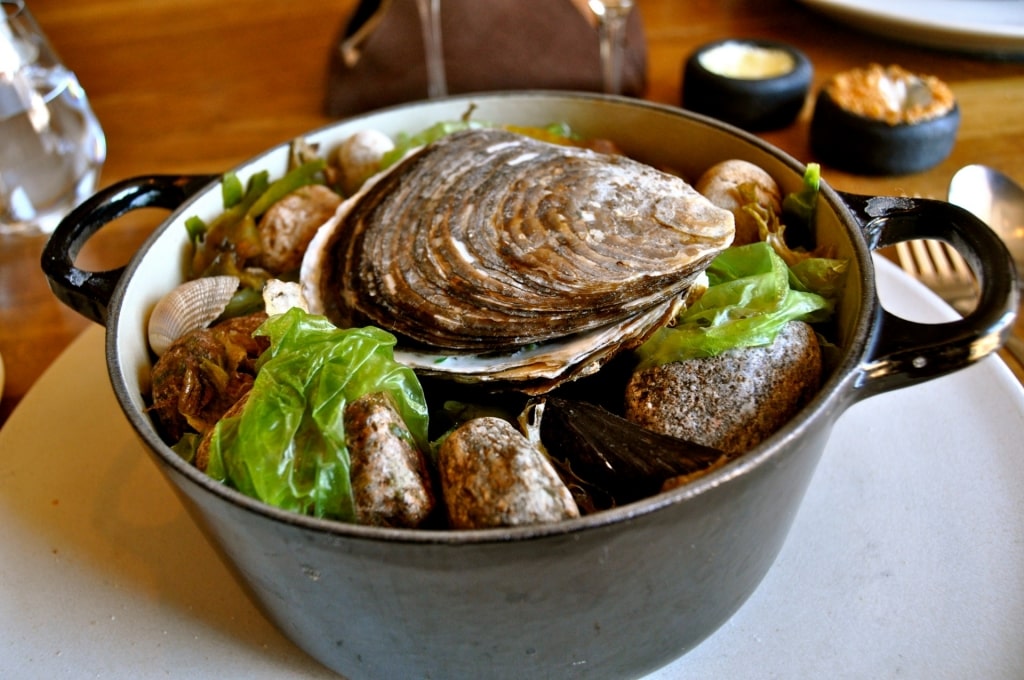
Noma, Copenhagen Photo by Studio Sarah Lou on Flickr, licensed under CC BY 2.0
When chef René Redzepi opened Noma in 2003, he forever changed both Copenhagen’s dining scene and Denmark’s culinary reputation abroad. At its core, the New Nordic philosophy espoused by Redzepi and his acolytes focused on hyperlocal, seasonal cuisine.
That can be a daunting concept in a place like Denmark, where little grows during the long winters. As a result, chefs were forced to get resourceful, using foraged ingredients like sea beans and lichen, game meats like reindeer, and all sorts of locally caught seafood in innovative ways.
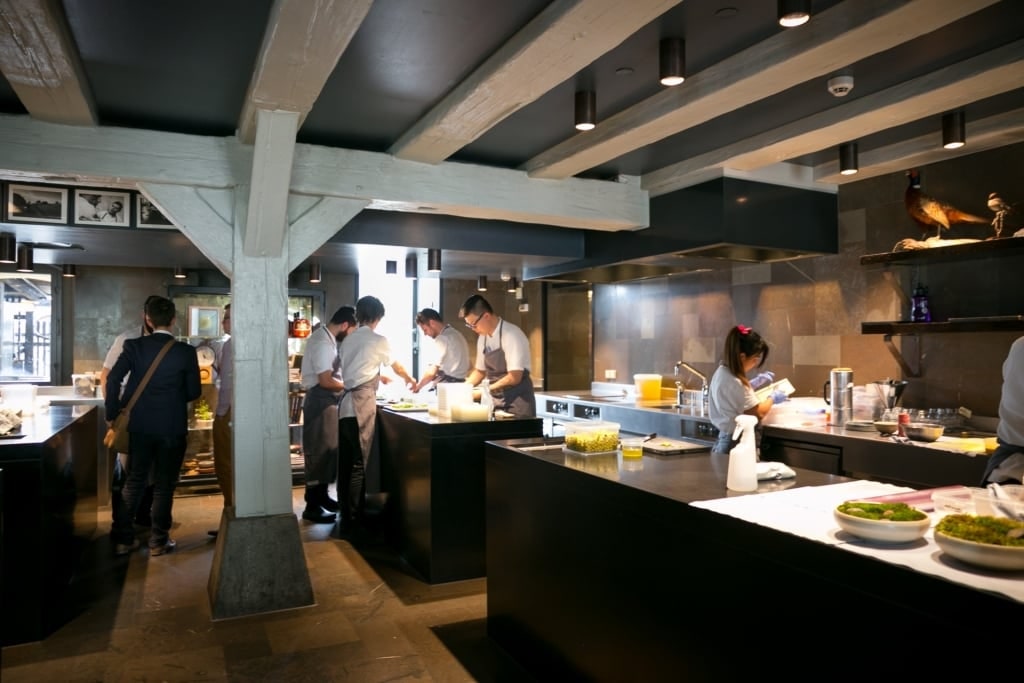
Noma, Copenhagen Photo by City Foodsters on Wikimedia Commons, licensed under CC BY 2.0
Noma’s explosive popularity and series of awards essentially jump-started an entire culinary ecosystem. Alumni from Redzepi’s kitchen have gone on to found plenty of restaurants of their own throughout Denmark, leading to an incredible proliferation of excellent places to eat. Best of all, many of these eateries are both comparatively affordable and accessible.
For instance, both Hija de Sanchez, an exceptional taco joint by Noma’s former pastry chef, and BÆST, a pizzeria from another Noma alum, showcase top-notch ingredients in a more casual atmosphere.
Read: Best Food Cities in Europe
Incredible Palaces
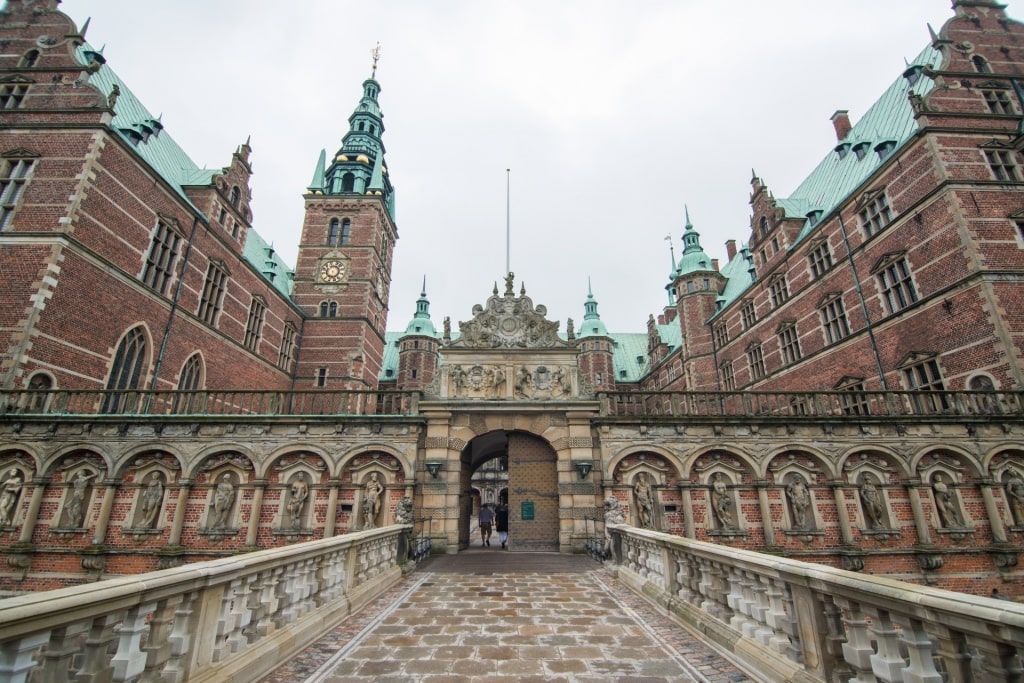
Rosenborg Castle, Copenhagen
Over the centuries, Denmark has amassed a number of absolutely stunning castles and palaces, many of which are open to the public.
Be sure to check out Christiansborg Palace during your day in Copenhagen. The lavishly decorated palace could give Versailles a run for its money. Nowadays, it’s mostly used to house the Danish Ministry of State, Parliament, and Supreme Court, but the royal family still uses sections for particularly grand diplomatic affairs.
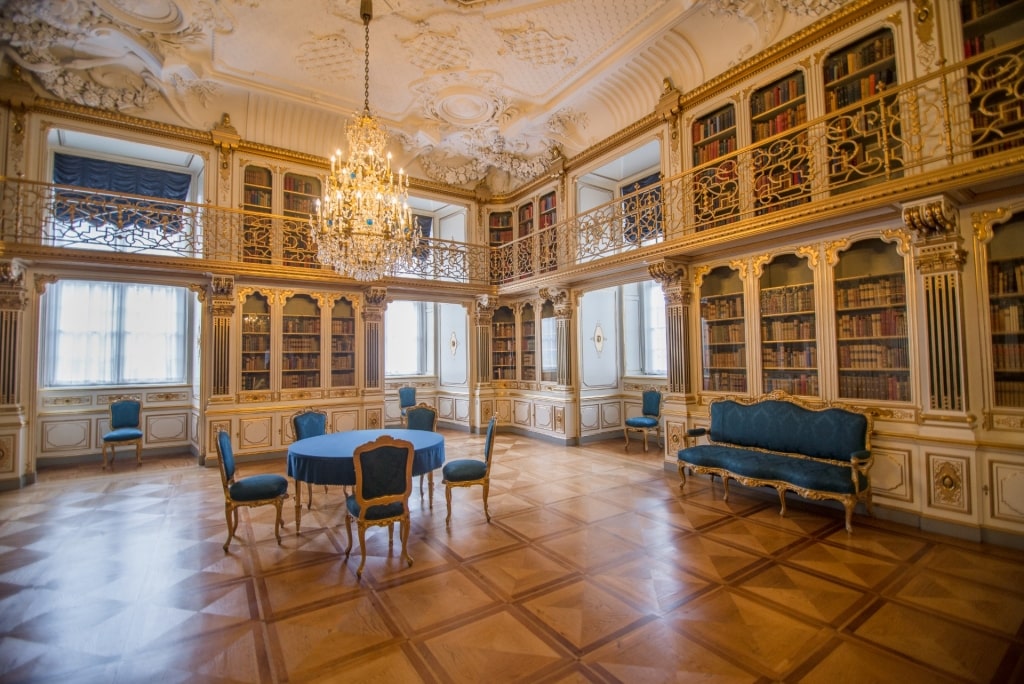
Rosenborg Castle, Copenhagen
One of the best things to do in Copenhagen is to visit Rosenborg Castle, home to the crown jewels and all manner of treasures accumulated by the monarchy over more than 400 years. Finally, outside of the capital in the coastal city of Skagen, travelers will find the impressive Voergaard Castle.
Experienced, multilingual tour guides bring this historic site to life with colorful anecdotes. Those drawn to the spooky side of history will appreciate the rather macabre visit to the dungeon, which still has a bloodstain on its wall.
Seafood
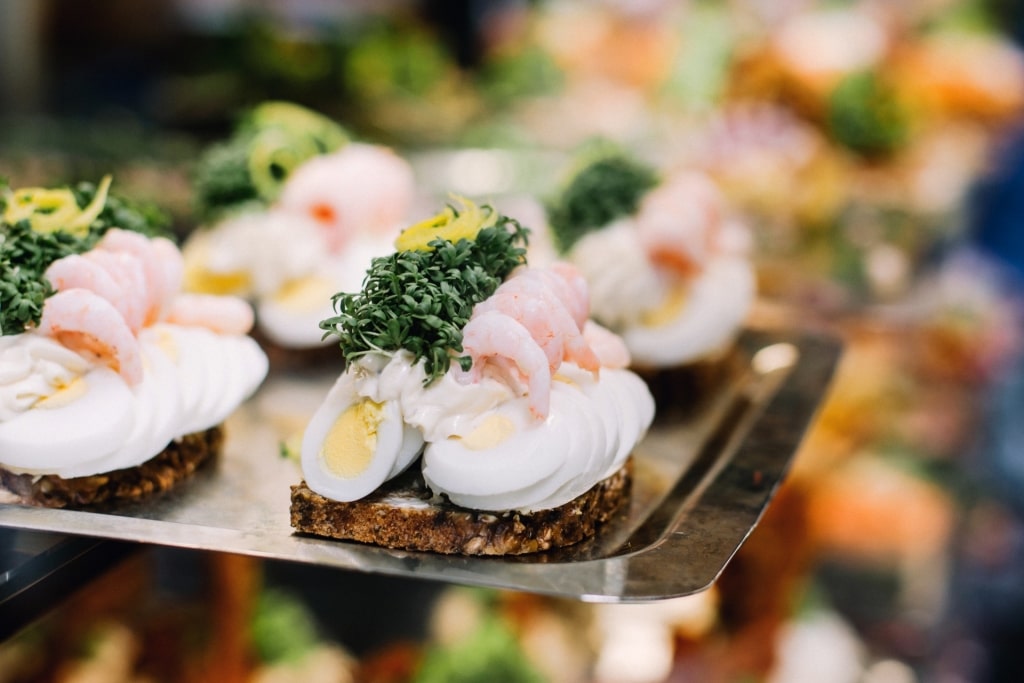
Seafood
Life in much of Denmark has historically been heavily tied to the ocean, so it should come as no surprise that superb seafood is at the core of its cuisine.
Fresh oysters, sea urchin, and delicate pink shrimp are just a few specialties found on tables all over the country. Blue mussels, snowy-fleshed cod, and rich mackerel are also popular local catches.
Pickled herring filets—served either simply topped with raw onions and a squeeze of lemon or fried in breadcrumbs—are a sustainable, delicious option found on every smørrebrød spread.
Another especially beloved option is stegt rødspætte, or a fried filet of plaice typically served either atop bread or accompanied by potatoes.
Tivoli Gardens
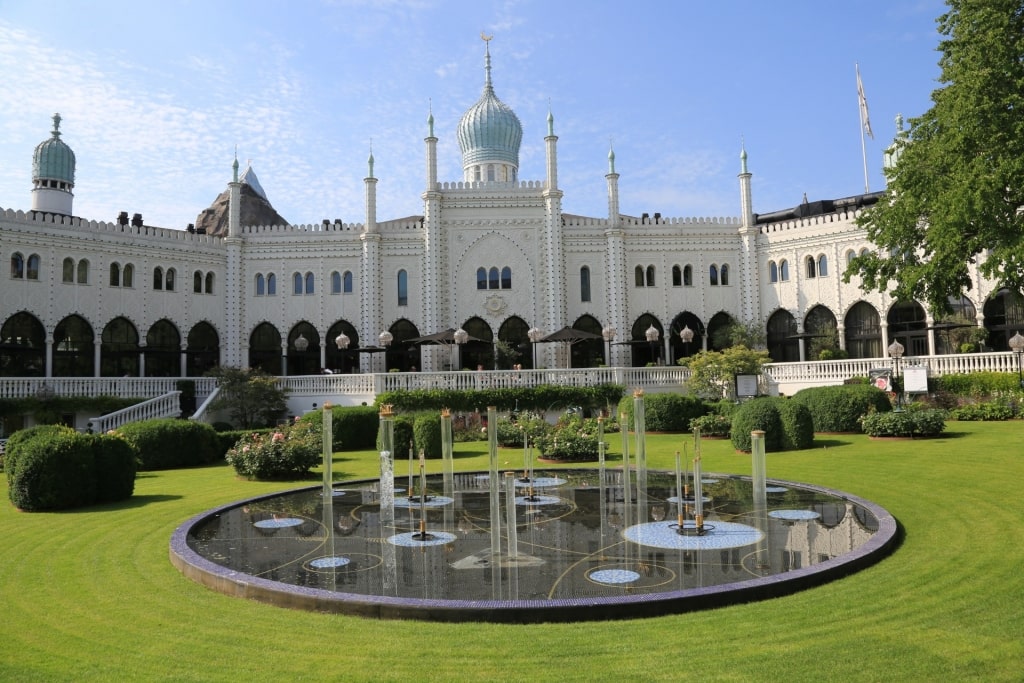
Tivoli Gardens, Copenhagen
Equally popular with the young and the young at heart, this whimsical amusement park right in the heart of Copenhagen is a delight.
Walt Disney himself was a fan back in the day and proudly acknowledged that Tivoli Gardens was part of the inspiration for his own magical kingdom. The architecturally stunning park dates back to 1843, giving it a vintage allure unmatched by more modern theme parks.

Tivoli Gardens, Copenhagen
Keep an eye out for peacocks, which roam freely and flaunt their plumage throughout the grounds. Adrenaline junkies won’t want to miss the rollercoasters here, which include Vertigo, a head-spinning rush that whips passengers along at more than 60 miles per hour, and the beautifully maintained wooden roller coaster dating back to 1914.
In addition to the usual assortment of amusement rides, the park hosts all sorts of concerts and seasonal events throughout the years. And while many amusement parks are known for their mediocre, overpriced food, Tivoli Gardens boasts top-notch dining options.
The Danish Royal Family
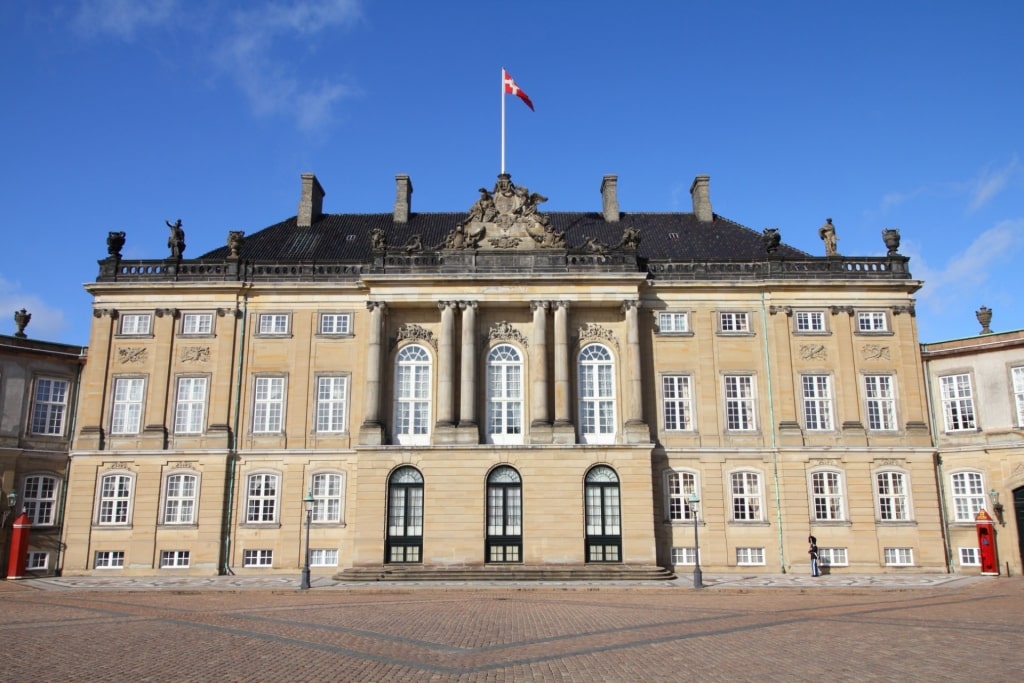
Amalienborg Palace, Copenhagen
While Denmark is governed by a parliamentary democracy, the Danes are nonetheless very fond of their royal family. The Danish monarchy has more than a millennium of history behind it, making it one of the oldest in the world.
Queen Margrethe II, who has held the throne for more than half a century, is known as a talented illustrator and ballet costume designer, as well as a philanthropist.
Members of the royal family, including Crown Prince Frederik and his wife, Mary, do make occasional public appearances. Visitors interested in learning more about the family and their traditions might want to pay a visit to Amalienborg Palace in Copenhagen.
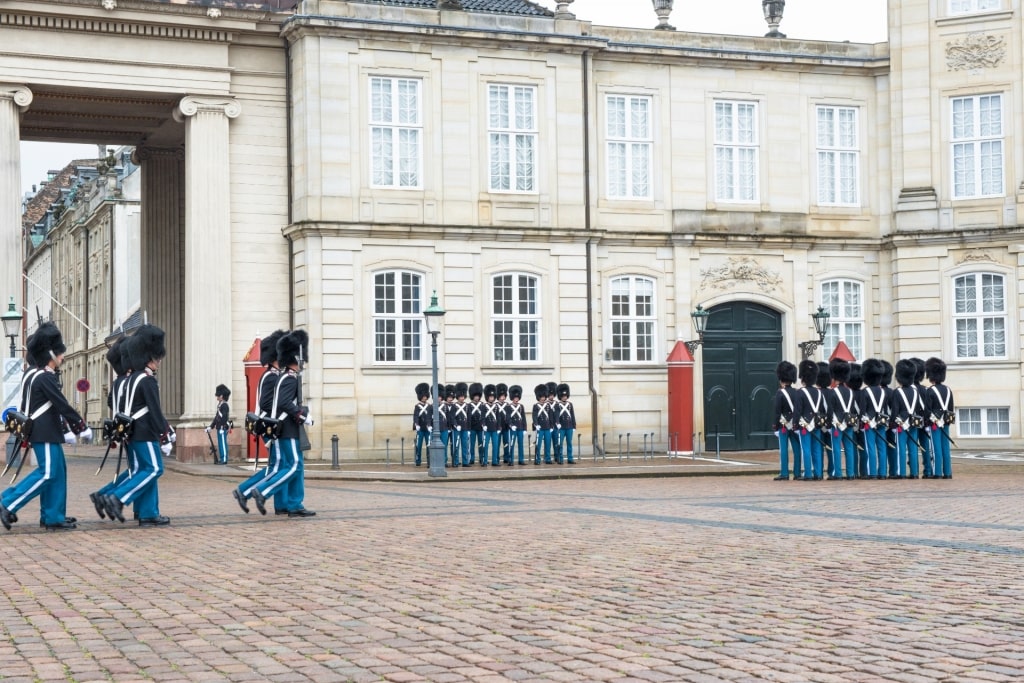
Amalienborg Palace, Copenhagen
In addition to the daily changing of the guard ceremony, this beautiful, operational royal palace is home to one of the best museums in Copenhagen detailing the history of the monarchy. The well-organized exhibitions include immaculately preserved royal rooms from different periods of history.
Spectacular Nature
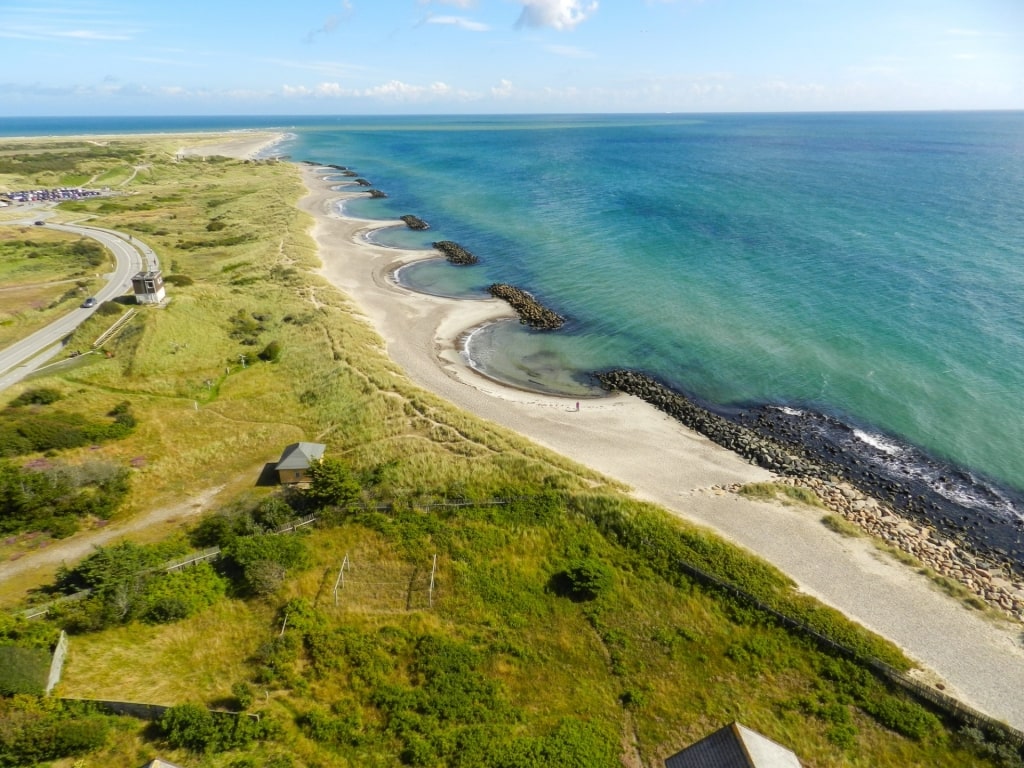
Grenen, Skagen
Denmark’s natural landscapes have a haunting, austere beauty to them throughout the year. The rugged, windswept coastlines with their natural sandy beaches are especially worth seeking out. Nature lovers should be sure to check out Grenen in Skagen.
Situated on the very tip of the Jutland peninsula, this striking barrier beach allows travelers to stand where the North and the Baltic Seas crash into one another. Keep an eye out for all sorts of birds, as well as seals and other marine life here.

Råbjerg Mile, Skagen
Not far away, you’ll find the Råbjerg Mile, an enormous, migrating sand dune. Each year, this immense landmark moves nearly 50 feet to the northeast, enveloping everything in its path. One especially curious casualty of this natural phenomenon is Den Tilsandede Kirke, or “The Sand-Covered Church,” which is sometimes also referred to simply as the “Buried Church.”
True to its name, this chapel originally built in the 14th century was partially swallowed up by the sand. It ceased operations in 1795, when the parish finally threw in the towel, but visitors can still see the main tower protruding from the earth.
Freetown Christiania
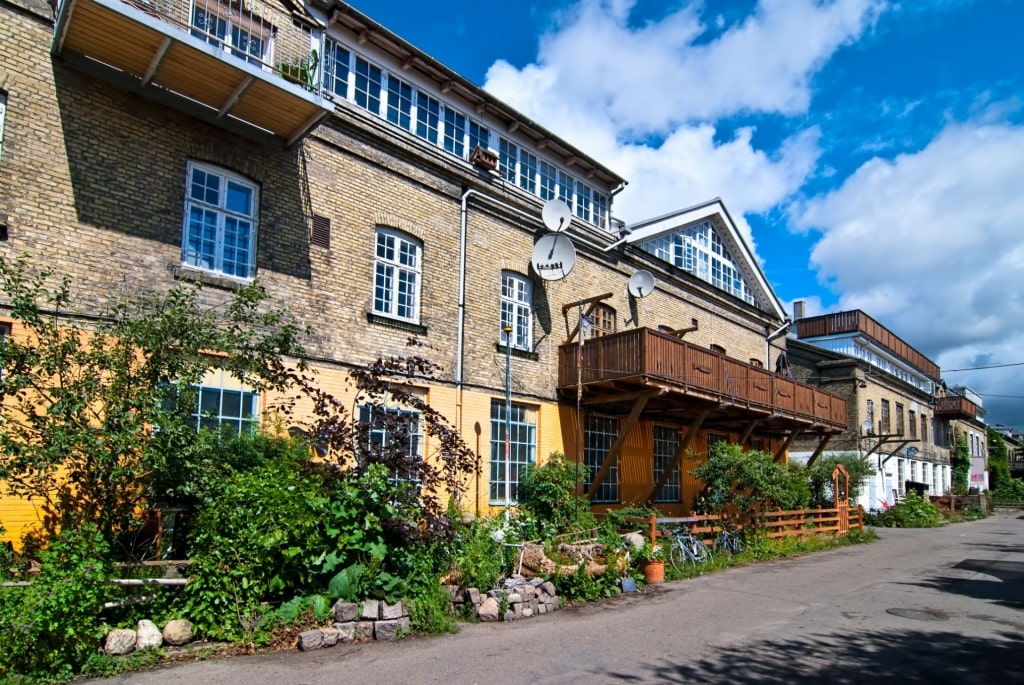
Freetown Christiania, Copenhagen
Stepping into Freetown Christiania in Copenhagen feels like entering another country—and in a way, you are. First founded as an illegal squat in a military barracks in 1971, this anarchist community of around 1,000 full-time residents stands apart from the rest of the Danish capital.
To this day, inhabitants of the community do not pay taxes. They also have their own flag, their own national anthem, and even their own currency, called the Løn, which is worth 50 Danish kroner.
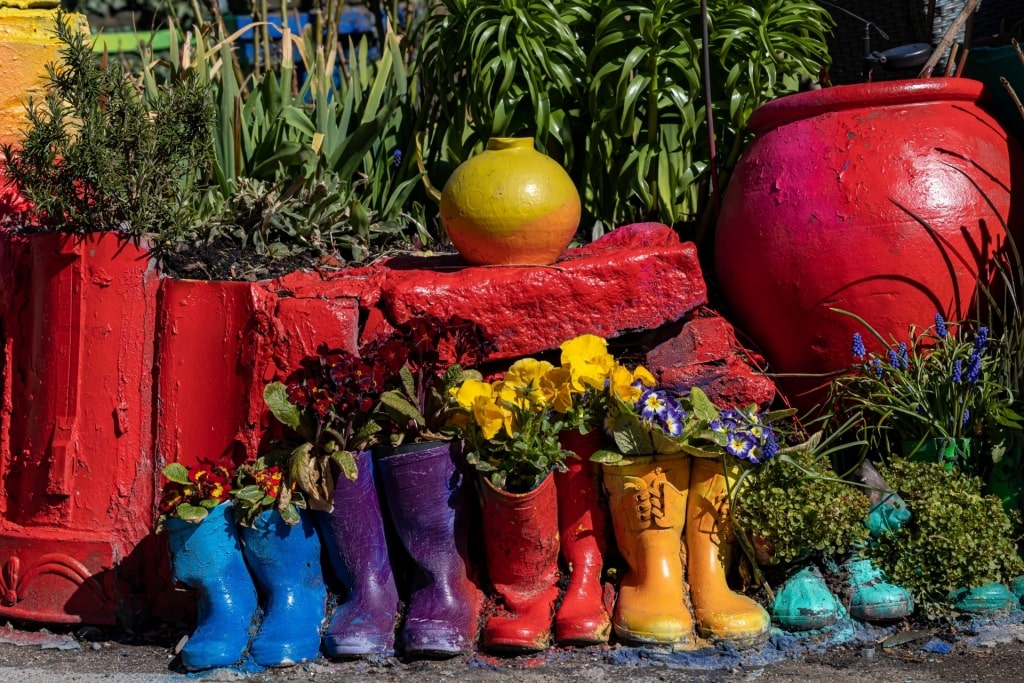
Freetown Christiania, Copenhagen
Expect to find delicious vegetarian food, colorful graffiti art, and more than a few unusual characters. Cars are strictly prohibited in these streets and the laid-back, bohemian vibes are infectious.
Note that Freetown Christiania has a reputation for selling contraband and that travelers are advised to keep a close watch on their belongings and refrain from taking photos here.
Hygge

Few concepts are as quintessentially Danish as that of hygge. Loosely translated, it means “coziness,” but it’s one of those words that has no precise English equivalent. Like their Nordic neighbors at northern latitudes, the Danes have an intimate understanding of the colder, darker months of the year.
On the winter solstice, Copenhagen gets a scant seven hours of daylight. Hygge is, in a sense, a way of not only tolerating, but also celebrating the long winters.
The concept of hygge suggests fuzzy socks, comfy sweaters, and evenings curled up by the fireplace with a warm mug of hot chocolate and good company. It’s not an etymological coincidence that the word sounds a lot like “hug” in English.
While the hygge feeling is particularly prevalent in the fall and winter months, it’s an ever-present component of the Danish psyche year-round.
Licorice Treats
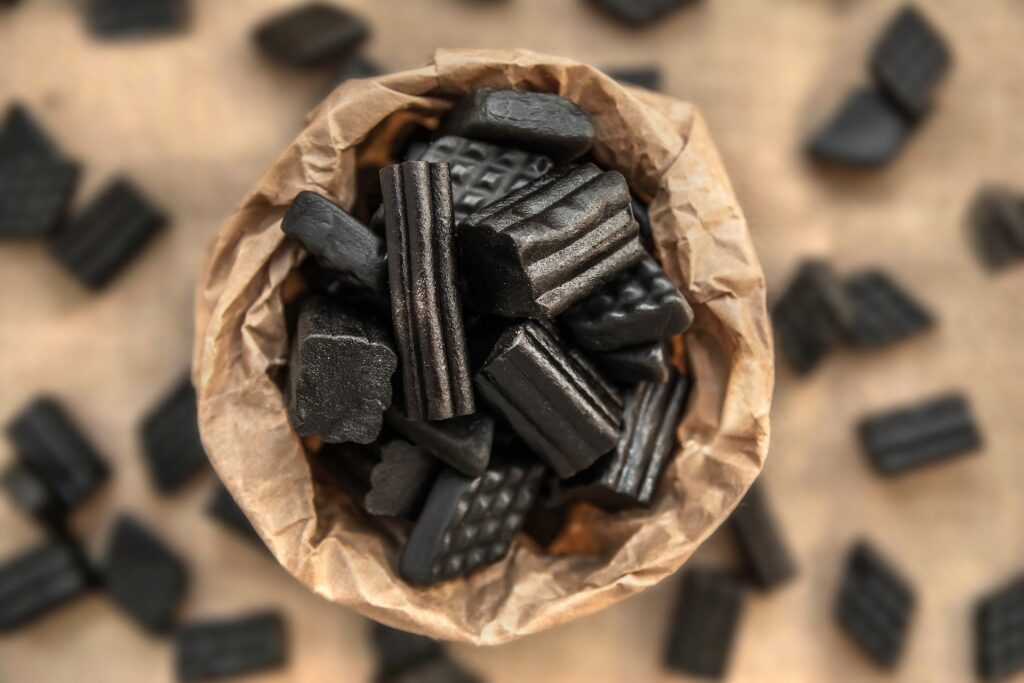
Licorice
To the uninitiated, licorice can be something of an acquired taste. For Nordic countries, which consume more than 80 percent of the global production, licorice is an obsession.
In Denmark, licorice candies are all over the place in a wide array of flavors and shapes. Of particular note is salmiaklakrids, or salty licorice, a curious confection that people tend to love or hate.
Even if you’re a bit of a licorice skeptic, a visit to Denmark may convert you. Lakrids by Bülow is an upscale Danish brand found in gourmet shops all over the country. In addition to traditional sweet and salty options, the company specializes in chocolate-covered licorice candies, along with unconventional flavors like habanero and passion fruit.
Architecture
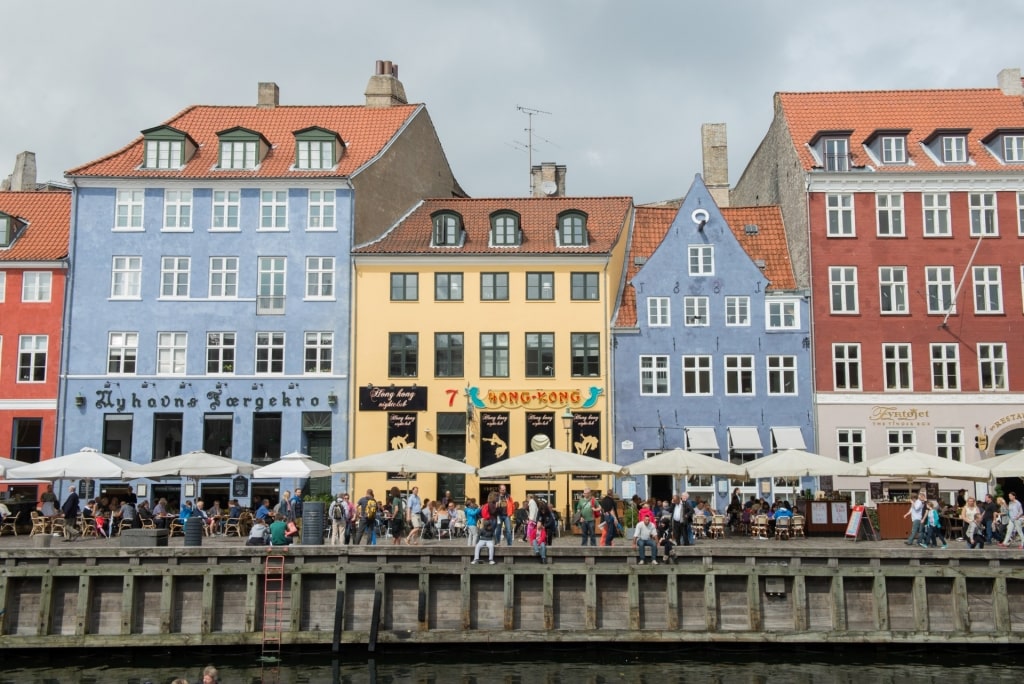
Nyhavn, Copenhagen
Denmark has a long, proud history as a center for thoughtful design, much of which can be seen when strolling through the streets of Copenhagen, known as one of the most beautiful cities in the world. The trained eye will pick up examples of everything from functionalism to modernism to Nordic classicism in the building facades here.
Design aficionados and just about everyone else will enjoy a visit to Nyhavn, a former commercial port that now is one of the most iconic places in the Danish capital. The waterfront here is lined with brightly hued houses, some of which date back to the 1600s. It’s by far one of the most photogenic spots in the Scandinavian city, particularly if you happen to take a canal tour.
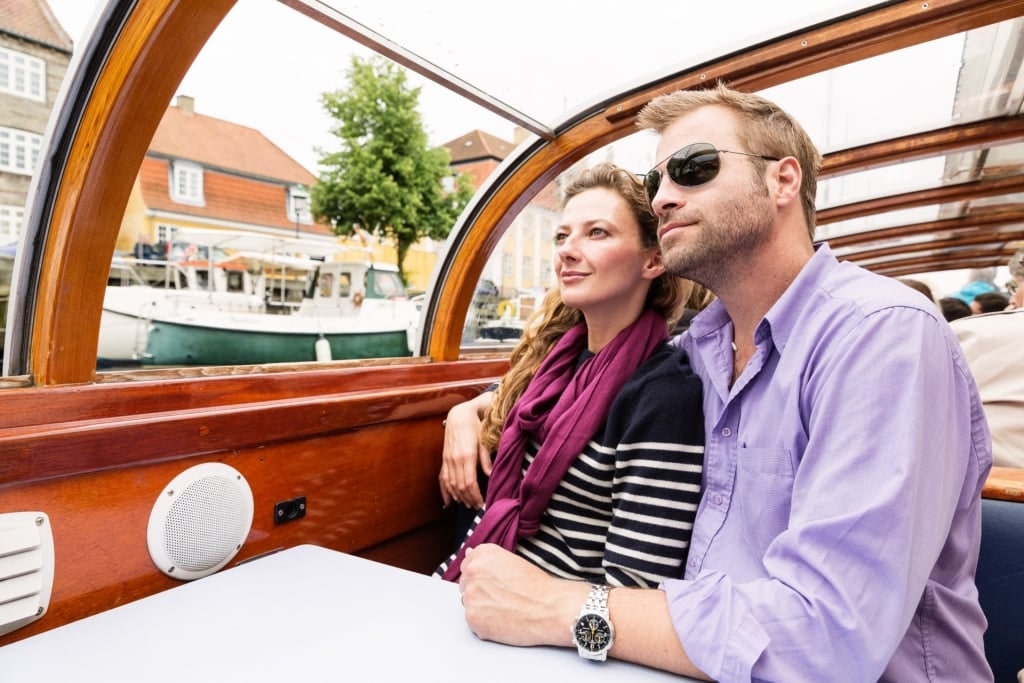
Copenhagen
Discover this beautiful, fascinating country on one of our Denmark cruises. Browse itineraries on our website and book your next voyage today.
